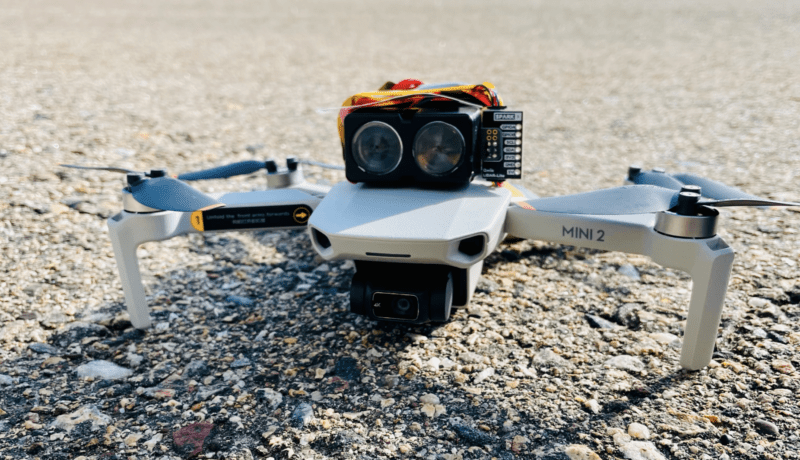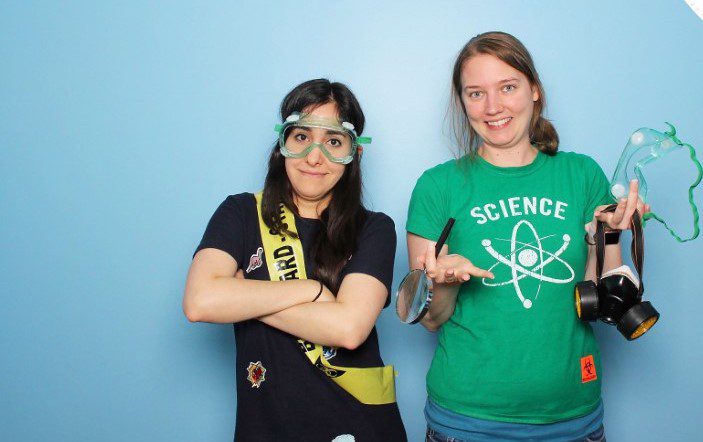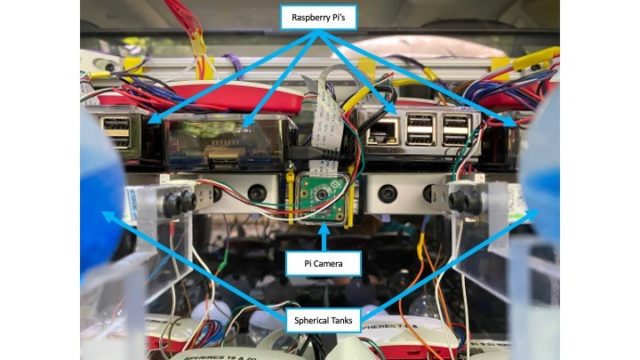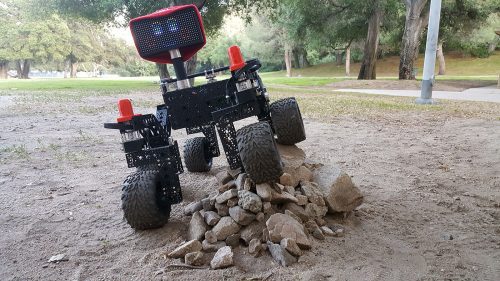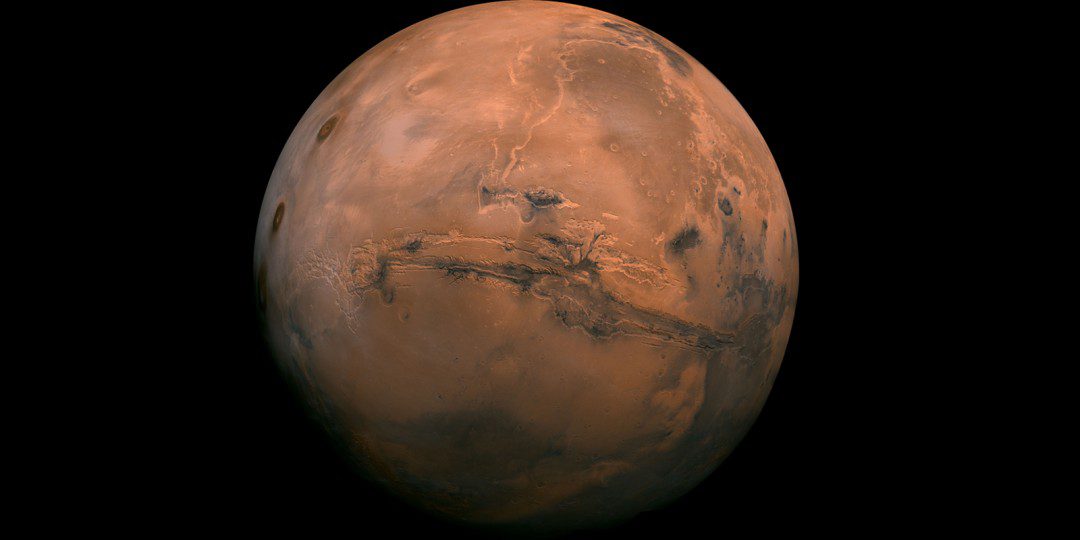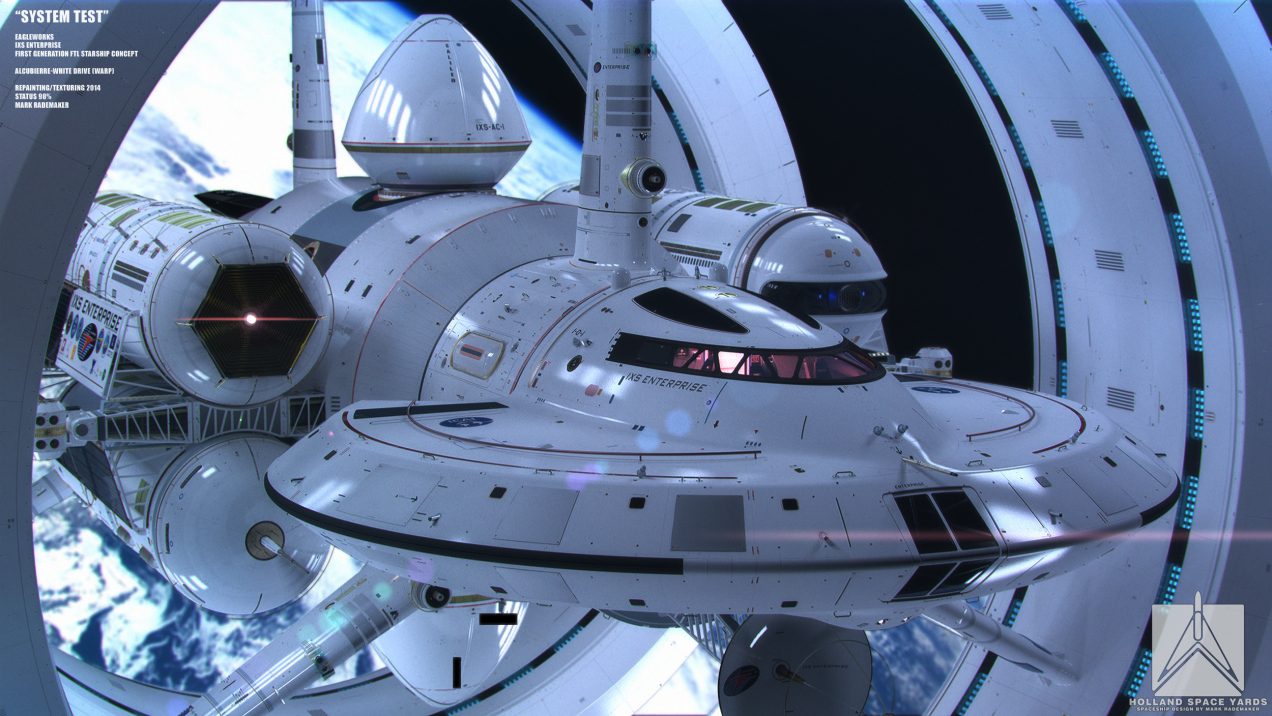Schlagwort: nasa
-

‘Epigone drone’ pays homage to NASA’s Mars Helicopter | The MagPi #107
Reading Time: 4 minutesInspired by NASA’s attempt to launch a helicopter on Mars, one maker made an Earth-bound one of her own. And she tells Rosie Hattersley all about it in the latest issue of The MagPi Magazine, out now. To avoid being swiped by the drone’s rotors, the Raspberry Pi 4, which uses NASA’s…
-

DIY Perseverance rover replica looks and moves like NASA’s
Reading Time: 2 minutesDIY Perseverance rover replica looks and moves like NASA’s Arduino Team — June 7th, 2021 Merely looking at the latest Mars rover, Perseverance, will make almost any nerd giddy with excitement over the amount of cool tech that’s crammed into the vehicle before it gets shot into space. This feeling is what…
-

Meet team behind the mini Raspberry Pi–powered ISS
Reading Time: 6 minutesQuite possibly the coolest thing we saw Raspberry Pi powering last year was ISS Mimic, a mini version of the International Space Station (ISS). We wanted to learn more about the brains that dreamt up ISS Mimic, which uses data from the ISS to mirror exactly what the real thing is doing…
-

13 Raspberry Pis slosh-test space shuttle tanks in zero gravity
Reading Time: 3 minutesHigh-school student Eleanor Sigrest successfully crowdfunded her way onto a zero-G flight to test her latest Raspberry Pi-powered project. NASA Goddard engineers peer reviewed Eleanor’s experimental design, which detects unwanted movement (or ‘slosh’) in spacecraft fluid tanks. The Raspberry Pi-packed setup The apparatus features an accelerometer to precisely determine the moment of…
-

NASA, Raspberry Pi and a mini rover
Reading Time: 4 minutesNASA scientist Dr Jamie Molaro plans to conduct potentially ground-breaking research using a Raspberry Pi seismometer and a mini rover. Jamie has been working on a payload-loaded version of NASA’s Open Source Rover In the summer of 2018, engineers at NASA’s Jet Propulsion Laboratory built a mini planetary rover with the aim…
-

Build your own NASA Curiosity rover
Reading Time: 3 minutesPut together your own remote-controlled Curiosity rover with the help of the NASA Jet Propulsion Laboratory and a Raspberry Pi. Why wouldn’t you want one of these?! NASA Jet Propulsion Laboratory To educate the curious about the use of rovers in space, the Pasadena-based NASA Jet Propulsion Laboratory (JPL) built a mini-rover, ROV-E, to…
-

Made In Space Wins NASA Contract for Next-Gen ‘Vulcan’ 3D Printer
Reading Time: 2 minutesCalifornia-based company which built the two 3D printers aboard the International Space Station (ISS) secures a NASA contract to continue developing its next-generation Vulcan manufacturing system. As the name implies, Made in Space is a company that specializes in additive manufacturing in space. And they’re pretty established, too. The start-up already has…
-

Free STL Files & 3D Printer Models – 35 Best Sites
Reading Time: < 1 minuteYobi3D is a bleeding edge search engine that helps you find free STL files, and then offers comprehensive features like 3D visualization, sharing, and even one-click 3D printing. With this workflow, you can select any number of 3D printer models and have them fabricated without even touching a 3D printer. The…
-

Going Interstellar – Laser Propulsion Could Take Humans to Mars in Just 3-Days
Reading Time: < 1 minute[mbYTPlayer url=“https://www.youtube.com/watch?v=WCDuAiA6kX0″ opacity=“.5″ quality=“medium“ ratio=“auto“ isinline=“false“ showcontrols=“false“ realfullscreen=“true“ printurl=“true“ autoplay=“true“ mute=“true“ loop=“true“ addraster=“true“ stopmovieonblur=“false“ gaTrack=“false“] Philip Lubin, a researcher at the University of California at Santa Barbara’s Experimental Cosmology Group, has proposed an innovative propulsion method that could eventually transport humans to Mars in 3-days or less. It involves an unmanned…
-

IXS Enterprise – NASA Unveils Incredible Design for Warp Drive Spacecraft!
Reading Time: < 1 minute[mbYTPlayer url=“https://www.youtube.com/watch?v=X4n1DwxW5Zk“ opacity=“.5″ quality=“medium“ ratio=“auto“ isinline=“false“ showcontrols=“false“ realfullscreen=“true“ printurl=“true“ autoplay=“true“ mute=“true“ loop=“true“ addraster=“true“ stopmovieonblur=“false“ gaTrack=“false“] According to Professor Geraint Lewis, from the University of Sydney, warp speed within the next 100-years is possible, enabling us to travel between galaxies a reality. This concept was part of Einstein’s theory of relativity, which…
-

These Aren’t Blueberries, Just Breathtaking Pictures Captured by the Mars Rover Opportunity
Reading Time: < 1 minuteNo, you aren’t looking at pictures of blueberries scattered over rocks, but real images of the Martian landscape photographed by the Mars Rover Opportunity. The discovery of these Martian clusters a decade ago provided some of the first evidence of liquid water on the red planet.
-

Need some time off your feet? NASA paying volunteers $18K to lie in bed for 70 days
Reading Time: 4 minutesIf you just can’t get out of bed, NASA might have a mission for you. A NASA study is recruiting volunteers to to lie in a bed that is tilted downward at a 6 degree angle for 70 days. Subjects who complete the entire bed rest project can earn up to $18,000.…
-

Objective Europa Will Send Astronauts on One-Way Mission to Jupiter’s Moon
Reading Time: < 1 minuteObjective Europa is basically a group, led by Kristian von Bengtson, that is in the early planning stages of sending astronauts to Jupiter’s moon Europa to look for life. One caveat: the trip is one-way with no hope of return at the end of the mission. This is different from the…
